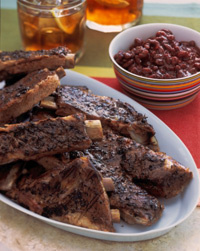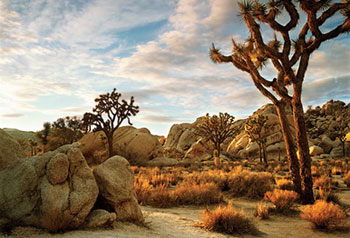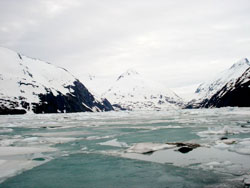 New Orleans, founded in 1718, has many long standing traditions. During the holidays, many of these still exist and there are even a few new ones! There is always a reason to have a celebration in New Orleans but from November - January, traditions and celebrations truly shine.
New Orleans, founded in 1718, has many long standing traditions. During the holidays, many of these still exist and there are even a few new ones! There is always a reason to have a celebration in New Orleans but from November - January, traditions and celebrations truly shine.
The sound of the trumpet heralds the opening of New Orleans' holiday season at the Fairgrounds Race Course on Thanksgiving Day. The Fairgrounds is the third oldest and continuously operating thoroughbred racetrack in the United States. It's first race was in 1852. Turkey, hats, horses…it's off to the races!
The Roosevelt Hotel opened in 1893 and has seen a number of famous people walk through it's lobby from politicians to royalty. Beginning in the 1930s, The Roosevelt Hotel became a destination of delight for children and parents alike with their beautiful lobby filled with holiday lights. At one end of the lobby is Domenica Restaurant run by Chef Alon Shaya, an Israeli-born chef who has created a special Hanukkah menu for the holidays. Shaya's latkes, short ribs and Hanukkah doughnuts are a new tradition not to be missed.

 I was 'off to see the queen,' the stewardess lingo we use when
working a London trip. I packed my tall boots, a few jackets and
scarves. I was invited to join a friend from London for dinner with a
small group at the famous old oyster bar "J Sheekey." I was, for once,
concerned about what I would wear as my friend, Tim is a famous London
tailor with a shop on Savile Row as well as shops all over the world.
He dresses David Beckam and Tom Cruise and I certainly did not want to
embarrass myself with some sort of 'get up' from my usual suitcase
wardrobe.
I was 'off to see the queen,' the stewardess lingo we use when
working a London trip. I packed my tall boots, a few jackets and
scarves. I was invited to join a friend from London for dinner with a
small group at the famous old oyster bar "J Sheekey." I was, for once,
concerned about what I would wear as my friend, Tim is a famous London
tailor with a shop on Savile Row as well as shops all over the world.
He dresses David Beckam and Tom Cruise and I certainly did not want to
embarrass myself with some sort of 'get up' from my usual suitcase
wardrobe.
 I grew up in the deep south, a small town called Hawkinsville, GA, population 3500. Probably the best thing I have ever eaten in my life is the BBQ we had on special occasions on our farm. I know, you can get BBQ everyday. Yes, I have been to those famous BBQ joints in Memphis and those in North Carolina. Not impressed; it's all about the sauce and good BBQ needs little sauce. My dad employed an old man named Clayton since I was a child until he died a few years ago. Great BBQ is an art, like the glass blowers in Murano, Italy or a small farmer in France making cheese. There is no recipe, just talent and experience.
I grew up in the deep south, a small town called Hawkinsville, GA, population 3500. Probably the best thing I have ever eaten in my life is the BBQ we had on special occasions on our farm. I know, you can get BBQ everyday. Yes, I have been to those famous BBQ joints in Memphis and those in North Carolina. Not impressed; it's all about the sauce and good BBQ needs little sauce. My dad employed an old man named Clayton since I was a child until he died a few years ago. Great BBQ is an art, like the glass blowers in Murano, Italy or a small farmer in France making cheese. There is no recipe, just talent and experience.
 Do you remember Mrs. Gooch’s health food stores? Opened in West Los
Angeles in 1977, Sandy Gooch’s markets served Southern California
hazard-free food until Whole Foods acquired it in 1993. If you remember
it fondly, you’re ripe for the picking. And let’s face it, if you’re
reading this you know its time for an escape. Religious experience or
not, the desert is dialing your exhausted and stressed number. Life can
take its toll, especially for those who spend a great portion of their
day trudging through traffic under the constant sun of Los Angeles,
California. It’s only human to reconnect with nature by departing the
idiosyncratic superficialities that surround you: billboards demanding
you lose weight, drink specific liquor, or watch the latest blockbuster
that diminishes your intelligence. Let a Midwesterner tell you weeks of
nothing but vitamin D infused blue skies can cause disenchantment!
Do you remember Mrs. Gooch’s health food stores? Opened in West Los
Angeles in 1977, Sandy Gooch’s markets served Southern California
hazard-free food until Whole Foods acquired it in 1993. If you remember
it fondly, you’re ripe for the picking. And let’s face it, if you’re
reading this you know its time for an escape. Religious experience or
not, the desert is dialing your exhausted and stressed number. Life can
take its toll, especially for those who spend a great portion of their
day trudging through traffic under the constant sun of Los Angeles,
California. It’s only human to reconnect with nature by departing the
idiosyncratic superficialities that surround you: billboards demanding
you lose weight, drink specific liquor, or watch the latest blockbuster
that diminishes your intelligence. Let a Midwesterner tell you weeks of
nothing but vitamin D infused blue skies can cause disenchantment!
 Twenty years ago this summer I fell in love with Alaska. After
graduating from college and moving permanently to Atlanta with friends,
I thought I had died and gone to heaven by escaping my small town life.
My parents quickly threw a wrench into all the excitement by informing
me we were going on a family vacation to Alaska - a week on a cruise
ship. I balked, begged and pleaded not to go. I am the least
'outdoorsy' person in the world. I don't like to be cold and I don't
like to be hot. My definition of camping is a night at a Holiday Inn
Express.
Twenty years ago this summer I fell in love with Alaska. After
graduating from college and moving permanently to Atlanta with friends,
I thought I had died and gone to heaven by escaping my small town life.
My parents quickly threw a wrench into all the excitement by informing
me we were going on a family vacation to Alaska - a week on a cruise
ship. I balked, begged and pleaded not to go. I am the least
'outdoorsy' person in the world. I don't like to be cold and I don't
like to be hot. My definition of camping is a night at a Holiday Inn
Express. 
